
Software Development Outsourcing Trends to Watch Out for in 2023
Last updated: November 25, 2025 Read in fullscreen view
- 07 Jul 2024
 Top Fintech Companies in Vietnam Driving Innovation Across Digital Banking & Investment 28/44
Top Fintech Companies in Vietnam Driving Innovation Across Digital Banking & Investment 28/44 - 05 Oct 2025
 The New Facebook Algorithm: A Paradigm Shift in Content Discovery 19/46
The New Facebook Algorithm: A Paradigm Shift in Content Discovery 19/46 - 03 Nov 2023
 Why Is Billable Viable Product An Alternative To Minimum Viable Product? 12/165
Why Is Billable Viable Product An Alternative To Minimum Viable Product? 12/165 - 01 Nov 2023
 Difference between Vendor and Subcontractor 12/923
Difference between Vendor and Subcontractor 12/923 - 15 Oct 2022
 Project-based team model for one-off and pilot software development projects 10/730
Project-based team model for one-off and pilot software development projects 10/730 - 24 Nov 2025
 Top Blockchain Companies in Vietnam 10/27
Top Blockchain Companies in Vietnam 10/27 - 05 Aug 2025
 Why Doesn’t South Korea Outsource Its IT Projects Like Other Developed Countries? 10/83
Why Doesn’t South Korea Outsource Its IT Projects Like Other Developed Countries? 10/83 - 03 Oct 2020
 Outsourcing Your MVP Development - Streamlined Solutions for future 9/400
Outsourcing Your MVP Development - Streamlined Solutions for future 9/400 - 18 Jul 2024
 The 8 Best ways to Innovate your SAAS Business Model in 2024 8/205
The 8 Best ways to Innovate your SAAS Business Model in 2024 8/205 - 30 Jul 2024
 The Future of IT Consulting: Trends and Opportunities 8/131
The Future of IT Consulting: Trends and Opportunities 8/131 - 21 Aug 2025
 Top 30 Oldest IT Outsourcing Companies in Vietnam 7/89
Top 30 Oldest IT Outsourcing Companies in Vietnam 7/89 - 31 Oct 2025
 The True ROI of Software Development Outsourcing for Tech Startups 7/58
The True ROI of Software Development Outsourcing for Tech Startups 7/58 - 27 Jul 2024
 Positive Psychology in the Digital Age: Future Directions and Technologies 6/337
Positive Psychology in the Digital Age: Future Directions and Technologies 6/337 - 24 Nov 2021
 What is the Actual Cost of Hiring Cheap Developers? 6/348
What is the Actual Cost of Hiring Cheap Developers? 6/348 - 22 Mar 2022
 8 Mistakes Marketing Agencies or Consulting Firms Make When Outsourcing Web Development 6/324
8 Mistakes Marketing Agencies or Consulting Firms Make When Outsourcing Web Development 6/324 - 10 May 2021
 Project Audit and Second Opinion Services 6/236
Project Audit and Second Opinion Services 6/236 - 11 Oct 2022
 Why choose Billable Viable Product (BVP) over Minimum Viable Product (MVP) 5/315
Why choose Billable Viable Product (BVP) over Minimum Viable Product (MVP) 5/315 - 12 May 2021
 The Real Cost Between Outsourcing IT vs In-House: A Quick Comparison 5/401
The Real Cost Between Outsourcing IT vs In-House: A Quick Comparison 5/401 - 11 Mar 2023
 Common Pain Points in Software Development Outsourcing 5/227
Common Pain Points in Software Development Outsourcing 5/227 - 05 Jan 2022
 What Outsourcing Engagement Model is Right For You? 5/290
What Outsourcing Engagement Model is Right For You? 5/290 - 30 Dec 2022
 Top 6 Reasons to Partner with TIGOSOFT 5/234
Top 6 Reasons to Partner with TIGOSOFT 5/234 - 25 Sep 2025
 A Practical Guide to Secure Online Work for Outsourced Teams 5/56
A Practical Guide to Secure Online Work for Outsourced Teams 5/56 - 06 Feb 2024
 What are benefits and drawbacks of co-creating solutions with your clients? 4/216
What are benefits and drawbacks of co-creating solutions with your clients? 4/216 - 09 Jan 2021
 How can outsourcing enable business agility? 4/178
How can outsourcing enable business agility? 4/178 - 14 Dec 2021
 The Top 10 Problems with Outsourcing Implementation and How to Solve Them 4/376
The Top 10 Problems with Outsourcing Implementation and How to Solve Them 4/376 - 02 May 2021
 Outsourcing Software Development: Avoid 8 Mistakes 4/89
Outsourcing Software Development: Avoid 8 Mistakes 4/89 - 16 Dec 2021
 Why outsource Python development of your project? 3/445
Why outsource Python development of your project? 3/445 - 12 Jan 2023
 Top 10 Trustworthy IT Outsourcing Companies in Vietnam 3/262
Top 10 Trustworthy IT Outsourcing Companies in Vietnam 3/262 - 19 Mar 2021
 Selective Outsourcing of IT Functions - a new trend in business outsourcing 3/495
Selective Outsourcing of IT Functions - a new trend in business outsourcing 3/495 - 21 Oct 2021
 Advantages and Disadvantages of IT Outsourcing 3/321
Advantages and Disadvantages of IT Outsourcing 3/321 - 01 Jan 2024
 12 reasons for software development outsourcing 3/146
12 reasons for software development outsourcing 3/146 - 01 Jan 2023
 4 New IT Outsourcing Pricing Models to consider in 2023 3/323
4 New IT Outsourcing Pricing Models to consider in 2023 3/323 - 01 Jan 2023
 Why is Vietnam the Top IT Outsourcing Destination of 2023? 3/202
Why is Vietnam the Top IT Outsourcing Destination of 2023? 3/202 - 09 Oct 2024
 Short-Form Video Advertising: The Secret to Captivating Your Audience 3/107
Short-Form Video Advertising: The Secret to Captivating Your Audience 3/107 - 01 Jan 2024
 Tech Partnerships: Choosing the Right Software Outsourcing Firm in Vietnam 3/165
Tech Partnerships: Choosing the Right Software Outsourcing Firm in Vietnam 3/165 - 08 Oct 2024
 Vietnam: The Rising Star in Global Outsourcing – Trends and Costs for 2025 3/289
Vietnam: The Rising Star in Global Outsourcing – Trends and Costs for 2025 3/289 - 07 Nov 2024
 Outsourcing Crisis Looming: Will Trump's Policies Transform the Global IT Landscape? 3/157
Outsourcing Crisis Looming: Will Trump's Policies Transform the Global IT Landscape? 3/157 - 27 Feb 2025
 How AI Agents are Changing Software Development? 3/170
How AI Agents are Changing Software Development? 3/170 - 01 Jan 2024
 Software Outsourcing Questions for 2024 3/145
Software Outsourcing Questions for 2024 3/145 - 10 Sep 2024
 Leading Remote Teams in Hybrid Work Environments 2/125
Leading Remote Teams in Hybrid Work Environments 2/125 - 25 Jan 2025
 The Decline of Traditional SaaS and the Rise of AI-first Applications 2/73
The Decline of Traditional SaaS and the Rise of AI-first Applications 2/73 - 22 Nov 2024
 The Role of AI in Enhancing Business Efficiency and Decision-Making 2/155
The Role of AI in Enhancing Business Efficiency and Decision-Making 2/155 - 18 Aug 2024
 The Future of Web Development: Emerging Trends and Technologies Every Developer Should Know 2/175
The Future of Web Development: Emerging Trends and Technologies Every Developer Should Know 2/175 - 06 Oct 2021
 Intellectual property issues with outsourcing software development 2/364
Intellectual property issues with outsourcing software development 2/364 - 21 Dec 2023
 Top 12 Low-Code Platforms To Use in 2024 2/1149
Top 12 Low-Code Platforms To Use in 2024 2/1149 - 31 Dec 2022
 The New Normal for Software Development 2/343
The New Normal for Software Development 2/343 - 21 Oct 2022
 Outsourcing Billable Rate 2/244
Outsourcing Billable Rate 2/244 - 03 Nov 2021
 7 phases of Odoo Implementation and Development: Can they be outsourced? 2/357
7 phases of Odoo Implementation and Development: Can they be outsourced? 2/357 - 11 Jan 2024
 Entering the Japanese Market: Stacking the Deck and Setting Expectations 2/125
Entering the Japanese Market: Stacking the Deck and Setting Expectations 2/125 - 17 Oct 2020
 How Outsourcing can Improve Time Management for Better Business 2/184
How Outsourcing can Improve Time Management for Better Business 2/184 - 10 May 2021
 What are things you should look for in a good IT outsourcing company? 2/405
What are things you should look for in a good IT outsourcing company? 2/405 - 28 Oct 2022
 Expect the unexpected in 2023 - How Outsourcing Can Help? 2/184
Expect the unexpected in 2023 - How Outsourcing Can Help? 2/184 - 04 Jan 2021
 VIETNAM AS A BIG ATTRACTIVE DESTINATION IN THE FIELD OF OUTSOURCING 2/276
VIETNAM AS A BIG ATTRACTIVE DESTINATION IN THE FIELD OF OUTSOURCING 2/276 - 01 Oct 2022
 Vietnam is a favorite supply of IT outsourcing services to Japan 2/230
Vietnam is a favorite supply of IT outsourcing services to Japan 2/230 - 08 Feb 2022
 Software Development: Fixed Cost or Opportunity Cost? 2/444
Software Development: Fixed Cost or Opportunity Cost? 2/444 - 01 Sep 2019
 Outsourcing Software To Vietnam: Facts, benefits and limitations 2/392
Outsourcing Software To Vietnam: Facts, benefits and limitations 2/392 - 31 Dec 2022
 Future of Software Development Trends and Predictions for 2023 1/120
Future of Software Development Trends and Predictions for 2023 1/120 - 09 Sep 2022
 Close Collaboration and Communication Can Overcome the Challenges of Distributed Teams 1/129
Close Collaboration and Communication Can Overcome the Challenges of Distributed Teams 1/129 - 16 Aug 2022
 What is a Headless CMS? 1/225
What is a Headless CMS? 1/225 - 16 Sep 2022
 Examples Of Augmented Intelligence In Today’s Workplaces Shaping the Business as Usual 1/394
Examples Of Augmented Intelligence In Today’s Workplaces Shaping the Business as Usual 1/394 - 31 Dec 2021
 Outsourcing Software Development to mitigate the impact of COVID-19 1/289
Outsourcing Software Development to mitigate the impact of COVID-19 1/289 - 21 Aug 2022
 Forbes: IT Outsourcing Hotspot: Vietnam, A Small But Mighty Powerhouse 1/240
Forbes: IT Outsourcing Hotspot: Vietnam, A Small But Mighty Powerhouse 1/240 - 15 Aug 2021
 TIGO Rate Formula - Things the partners should know 1/418
TIGO Rate Formula - Things the partners should know 1/418 - 08 Aug 2021
 Why Nearshore Software Development is better than In-House Development? 1/174
Why Nearshore Software Development is better than In-House Development? 1/174 - 13 Oct 2021
 Why Outsourcing Software Development Services Is Gaining Traction With Non-Technical Leaders? 1/299
Why Outsourcing Software Development Services Is Gaining Traction With Non-Technical Leaders? 1/299 - 17 Jan 2024
 What are the benefits and challenges of using multi-sourcing or single-sourcing strategies? 1/157
What are the benefits and challenges of using multi-sourcing or single-sourcing strategies? 1/157 - 04 Apr 2024
 Unlock Vietnamese-Japanese outsourcing potential 1/214
Unlock Vietnamese-Japanese outsourcing potential 1/214 - 01 Jan 2024
 Hiring Tech Talents in Asia: An Overview of Skills, Costs, and Potential 1/148
Hiring Tech Talents in Asia: An Overview of Skills, Costs, and Potential 1/148 - 01 Jan 2024
 What The World Is Flat Means to IT Outsourcing 1/157
What The World Is Flat Means to IT Outsourcing 1/157 - 03 Jan 2024
 Why Partnership is important for Growth? 1/145
Why Partnership is important for Growth? 1/145 - 10 Jan 2024
 Facts Chart: Reasons for outsourcing 1/132
Facts Chart: Reasons for outsourcing 1/132 - 02 Nov 2023
 What are the pros and cons of iIT outsourcing? 1/184
What are the pros and cons of iIT outsourcing? 1/184 - 01 May 2023
 Streamline Your Business with Outsourcing 1/168
Streamline Your Business with Outsourcing 1/168 - 13 Jan 2023
 What are the Hourly Rates in Offshore Software Development? 1/223
What are the Hourly Rates in Offshore Software Development? 1/223 - 03 Jan 2023
 IT Outsourcing Costs: Is outsourcing really cost-effective? 1/185
IT Outsourcing Costs: Is outsourcing really cost-effective? 1/185 - 02 Mar 2021
 Estimate the Cost of Software Development 1/312
Estimate the Cost of Software Development 1/312 - 01 Mar 2022
 Top 5 reasons why outsourcing to Vietnam is a smart move 1/262
Top 5 reasons why outsourcing to Vietnam is a smart move 1/262 - 01 Apr 2021
 IT Outsourcing to vietnam: Why It Is A Good Choice? 1/258
IT Outsourcing to vietnam: Why It Is A Good Choice? 1/258 - 02 Dec 2024
 The Intersection of AI and Business Analytics: Key Concepts to Master in Your Business Analytics Course 1/253
The Intersection of AI and Business Analytics: Key Concepts to Master in Your Business Analytics Course 1/253 - 20 Feb 2025
 How Machine Learning is Shaping the Future of Digital Advertising 1/76
How Machine Learning is Shaping the Future of Digital Advertising 1/76 - 11 Mar 2024
 Why You Should Hire Odoo Developers from Vietnam to Customize Your ERP System 1/89
Why You Should Hire Odoo Developers from Vietnam to Customize Your ERP System 1/89 - 01 Jun 2025
 10 Sustainable & Unique IT Outsourcing Companies in Vietnam 1/58
10 Sustainable & Unique IT Outsourcing Companies in Vietnam 1/58 - 20 Aug 2025
 What Is Agentic AI? The Next Phase of Artificial Intelligence 1/96
What Is Agentic AI? The Next Phase of Artificial Intelligence 1/96 - 23 Jun 2025
 AI Avatars in the Metaverse: How Digital Beings Are Redefining Identity and Social Interaction /85
AI Avatars in the Metaverse: How Digital Beings Are Redefining Identity and Social Interaction /85 - 25 Sep 2024
 Enhancing Decision-Making Skills with an MBA: Data-Driven Approaches for Business Growth /177
Enhancing Decision-Making Skills with an MBA: Data-Driven Approaches for Business Growth /177 - 10 Sep 2024
 AI in Email Marketing: Personalization and Automation /154
AI in Email Marketing: Personalization and Automation /154 - 01 Jan 2023
 Top 5 IT outsourcing countries in 2023 /254
Top 5 IT outsourcing countries in 2023 /254 - 01 Jan 2023
 Top Software Development Challenges in 2023 /275
Top Software Development Challenges in 2023 /275 - 15 Nov 2023
 IT Staff Augmentation Types and the Best Choice for Your Business /155
IT Staff Augmentation Types and the Best Choice for Your Business /155 - 31 Dec 2023
 Software Development Outsourcing Trends to Watch Out for in 2024 /160
Software Development Outsourcing Trends to Watch Out for in 2024 /160 - 08 Jan 2024
 Outsourcing on an As-Needed Basis /144
Outsourcing on an As-Needed Basis /144 - 01 Feb 2023
 [InfoWorld] Is your outsourcer agile enough? /182
[InfoWorld] Is your outsourcer agile enough? /182 - 19 Dec 2023
 How AI is Transforming Software Development? /275
How AI is Transforming Software Development? /275 - 18 Jan 2024
 Self-healing code is the future of software development /200
Self-healing code is the future of software development /200 - 12 Oct 2021
 Vietnam outsourcing path - the silk road connecting ASEAN with the developed countries (EU, US, Japan...) /282
Vietnam outsourcing path - the silk road connecting ASEAN with the developed countries (EU, US, Japan...) /282 - 19 Oct 2020
 The hidden costs of outsourcing software development /434
The hidden costs of outsourcing software development /434 - 03 Nov 2022
 Top questions and answers you must know before ask for software outsourcing /264
Top questions and answers you must know before ask for software outsourcing /264 - 16 Mar 2021
 Outsource Data Engineering Services - TIGO Streamlined Solutions /234
Outsource Data Engineering Services - TIGO Streamlined Solutions /234 - 10 Mar 2021
 The 7 Biggest Mistakes to Avoid Before Outsourcing a Web Development Project /224
The 7 Biggest Mistakes to Avoid Before Outsourcing a Web Development Project /224 - 25 Nov 2021
 Low-Cost Software Development: Buy Nice or Buy Twice? /278
Low-Cost Software Development: Buy Nice or Buy Twice? /278
Sourcing Top Specialist Talent
In 2023, there’s a strong chance that attention for outsourcing services will be turned towards locating niche talent - the people who can do jobs that few others can.
When specialist talent is in short supply in your area, your options are limited. Yet when the global talent pool opens up to you, it makes sense to explore the abundance of niche talent located around the world.
Why the need for more specialist talent?
Because as technology continues to advance, with AI taking great strides and the world taking notice in the latter stages of 2022, there’s likely to be an uptick in tech-focused outsourcing. With the right working from home monitoring software you can hire talented overseas workers and get concrete data regarding their productivity levels.
Maintaining Business Continuity
Companies preferred outsourcing with multiple vendors before the pandemic. But now, most want a strategic partnership with one (or fewer) vendors,
Business continuity is all about maintaining relationships with the same companies, suppliers, and service providers. The advantage of doing this is knowing exactly what to expect, and minimizing the amount of change within your organization.
When you constantly switch up your business working arrangements, you risk losing productivity and make it much harder to predict productivity and other metrics you need to succeed.
How?
- Frequently changing service providers can disrupt business continuity.
- And a company is more likely to build a strong relationship with its outsourcing company when it’s working with the same team for an extended period. A strong bond can increase commitment and trust, which makes reaching objectives easier.
- Additionally, businesses can ensure continuity with an outsourcing partner through a more extended outsourcing contract.
In 2023, many businesses will focus their efforts on cultivating strong working relationships with a few outsourcing companies in favor of the constant churn and unpredictability of juggling new partnerships.
Especially in light of the turmoil of the past few years in business, with pandemics and growing talks of recession, it’s worth having business partners you can trust in the long term.
The Need for Advanced Technology
As technology continues to advance at breakneck speed, it’s likely that in 2023 there’ll be a trend toward less traditional outsourcing services.
For example, machine learning and automation could play a huge role in the coming years as companies look to grow smarter and more efficient with the assistance of technology. Cloud computing is another area many companies will look to for managing the heavy burden of storing and accessing online data and resources.
Here are the most current and trending technologies used in the outsourcing industry:
Robotic Process Automation (RPA) solutions
RPA is software development that helps build, deploy, and manage robots to carry out simple tasks. The demand for robotic process automation is increasing as companies realize it is more cost effective to use robots to perform repetitive tasks.
A 2022 Grand View Research report states that the RPA market size was worth $1.89 billion in 2021. This market will expand at a compound annual growth rate (CAGR) of 38.2% from 2022 to 2030.
Artificial intelligence, machine learning, and automation
Business and outsourcing companies use Artificial Intelligence to automate repetitive tasks, calculations, or replying to messages.
Additionally, Artificial Intelligence helps a provider improve customer service. Chatbots or cloud-based IVR (Interactive Voice Response) are examples of this revolutionary, emerging technology.
Cloud computing
Cloud outsourcing is essential to access other modern technologies like AI, RPA, and machine learning. It also empowers a company to collect and store resources on the cloud and access cloud services.
Companies such as Amazon Web Services (AWS), Google, and Microsoft are investing more capital into their cloud platform and cloud services.
Blockchain is Going Mainstream
Blockchain technology is not just for Bitcoin and other cryptocurrencies. It is a form of distributed ledger technology with the potential to transform industries, including finance and healthcare.
The most common implementation involves a network of computers working together to create what’s called a blockchain—the framework by which all transactions are recorded.
Any changes made within the Blockchain are verified and propagated through the entire system so that every computer has an identical copy of the Blockchain at any given time.
This way, Blockchain is changing the way industries work by removing intermediaries, establishing trust, and decentralizing control. This is how it will affect software development in the next five years.
- First, Blockchain will change the way we develop secure applications.
- Second, it will influence our ability to verify data integrity.
- Thirdly, smart contracts will be a more common part of software development.
- Fourthly, Blockchain will bring transparency and accountability into the supply chain process that has always been difficult to trace with current technology.
- Fifth, it will help with the Internet of Things (IoT) implementation by reducing the need for third-party validation of device information.
- Sixth, Blockchain will allow for anonymous data transactions, which could help patients get treatment without identity verification or documentation.
- Seventh, there will be less customer payment fraud because cryptocurrencies like Bitcoin use Blockchain to prevent double-spending.
A Focus on business flexibility and adaptability
The Covid pandemic and the resulting lockdowns were chaotic and disruptive. Many countries had a hard time recovering from the short term economic shock.
Flexibility is a trait that a lot of companies are already prioritizing - more and more businesses place heavy emphasis on agile processes and the need to be adaptable to navigate and overcome ever-changing obstacles.
2023 will mark a further honing in on this focus on flexibility, as many businesses are now starting to consider alternate work models such as the 4-day workweek.
As a result, it could be that there are gaps to fill, services to maintain, and customers to be served when teams spend more time OOO. It could also be the case that companies look to mitigate against disaster by outsourcing and refining their collaboration infrastructure and general workflows.
Surveillance software can be a useful aid for building a flexibility-first work dynamic, as you can onboard new hires with different hours while tracking productivity and output.
Outsourcing surge amongst startups and small businesses
Outsourcing allows small businesses or startups to access the best talents and tools at economical prices.
These businesses outsource repetitive tasks to save time and money. Small companies are also less likely to have experienced employees due to their limited payroll budget, and outsourcing enables them to access the best talents.
According to a Clutch survey, 90% of small US businesses plan to outsource a business process in 2022, a 10% increase from 2021.
This outsourcing trend will continue in 2023 and disrupt various industries.
Preferring remote work
Due to the Covid pandemic, remote work has become the new norm.
According to a 2022 study on remote work by SCIKEY, 82% of respondents prefer working from home.
The study further revealed that 64% of employees said that they are more productive working from home and feel less stressed.
From increasing their competitiveness by lowering labor costs, and reducing time-to-market, to improving quality and innovation – it’s no wonder this trend is expected to grow.
Companies are continuing to hire remote developers for their software development needs because they want the best talent with the most up-to-date knowledge while avoiding the high costs associated with hiring new employees.
This trend is set to continue in 2023 and beyond.
IT outsourcing to Eastern Europe and SouthEast Asia
Although India and China dominate the IT outsourcing industry, many tech businesses today are outsourcing tasks to Eastern Europe and SouthEast Asia. Companies in North America like the United States prefer East European countries (Romania, Ukraine, Poland...) and SouthEast Asia countries (Vietnam, Philippines, Indonesia...), for IT outsourcing due to their proficiency in English, cultural similarity and low cost. These regions have a high percentage of skilled people (including tech professionals), affordable talent, and strong data security.
Before the pandemic, companies were moving from cost reduction to prioritizing quality and scalability but that changed with the pandemic.
Deloitte’s Global Survey 2021 stated that 88% of the surveyed companies said cost reduction was now their main outsourcing objective.
Most surveyed outsourcing companies said that although clients wanted agility, scalability, and technology enablement, the reduction of operational costs brought by outsourcing services was the primary decision making factor.
This trend could continue in 2023 while the world economy recovers from the pandemic and recessions.

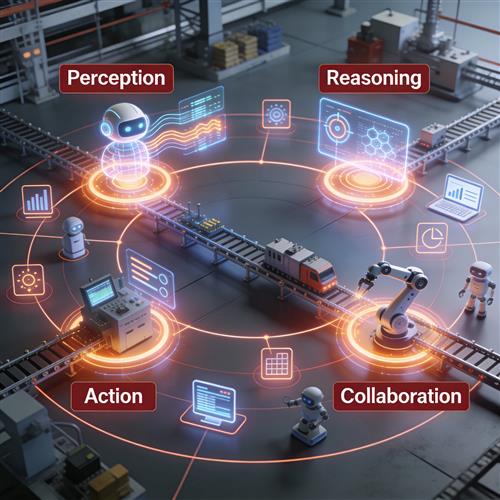




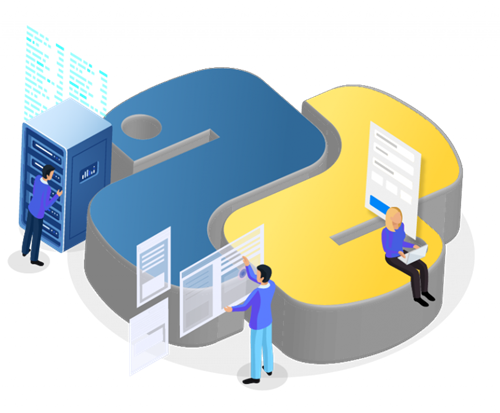





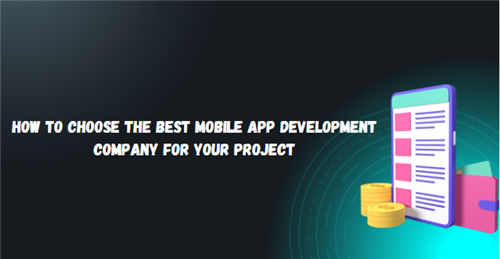

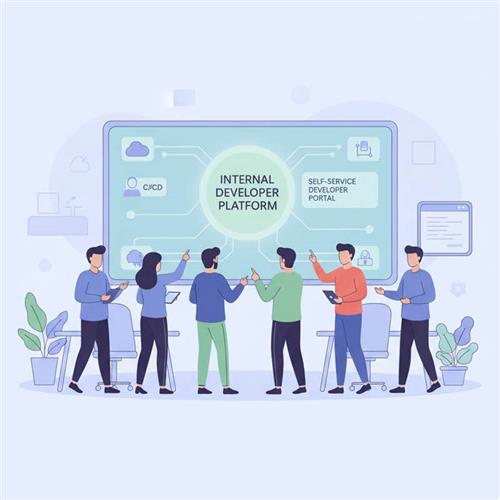
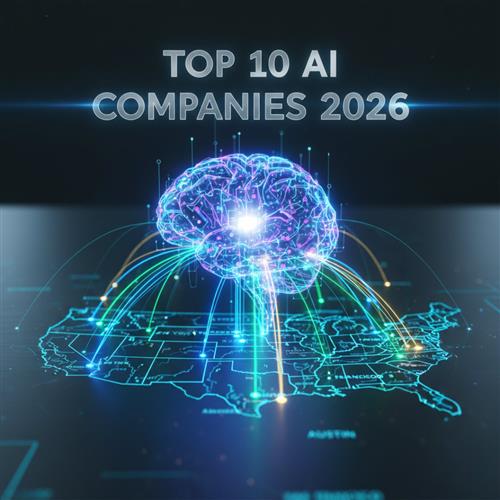



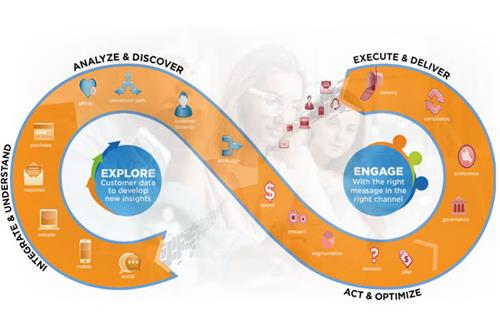












 Link copied!
Link copied!
 Recently Updated News
Recently Updated News